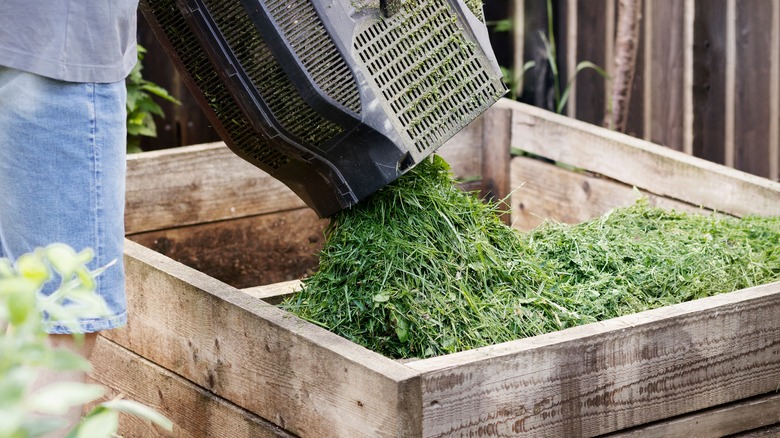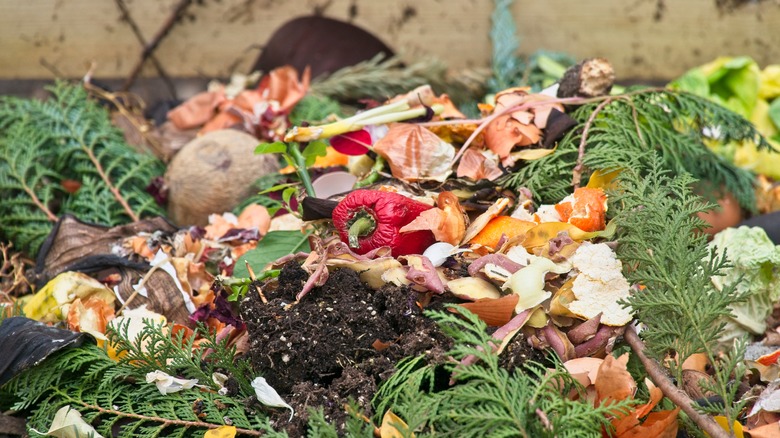Your Compost Bin Is Begging For Your Leftover Grass Clippings
There are some big benefits to composting at home, but if you feel like your compost bin is looking a little bare, and you've already exhausted all of the usual sources of food scraps and organic materials, you may be looking for something more to contribute. Fortunately, you may not have to look as far as you think. There's a great composting material hiding right under your nose that you might not have considered: Grass clippings.
After cutting your home's lawn, there will always be plenty of extra grass clippings around. Instead of disposing of them, consider composting them. Grass clippings can be composted in several different ways and are a great addition to a bin because they provide high levels of nitrogen and other nutrients. Adding grass clippings to your compost bin or using another composting method will help you get the most value out of it.
If composting grass clippings in a bin, you'll simply need to collect grass clippings in a bag as you mow your grass. Then, you can add it to the bin at will. However, you'll want to aim for a 50:50 ratio of grass clippings and brown materials such as branches and leaves to keep a good microbe balance. Also, ensure you're only adding grass clippings that are dry and haven't been treated in the previous two weeks.
Other ways to compost grass clippings
There are other ways to use grass clippings as compost aside from adding them to a compost bin. An even simpler solution is to simply leave grass clippings on your lawn when mowing. Grass clippings will naturally compost in your yard and provide nitrogen and other nutrients to the soil in your lawn. They'll quickly decompose after a few weeks have passed.
If you don't want to just leave grass clippings scattered around your lawn, however, you may also want to consider creating a DIY compost pile in your yard. Be sure to place this pile out of the way. Keep it away from your home and your neighbor's home so that the smell doesn't become a problem. Remember that you'll need to combine the grass clippings with other materials to get the best results.
Aim to make the pile a minimum of 4-square-feet in size. You'll generally want to add to the pile in layers. One of the best strategies is to use a simple sandwich method in which you'll alternative green and brown material. For example, in the first layer you'll want to add twigs, branches, cornstalks, or wood chips and other things that are high in carbon. In the second layer, you can add grass clippings and other common compost materials that are high in nitrogen. You can then alternate and repeat these layers until the compost reaches a height of 4 or 5 feet.

